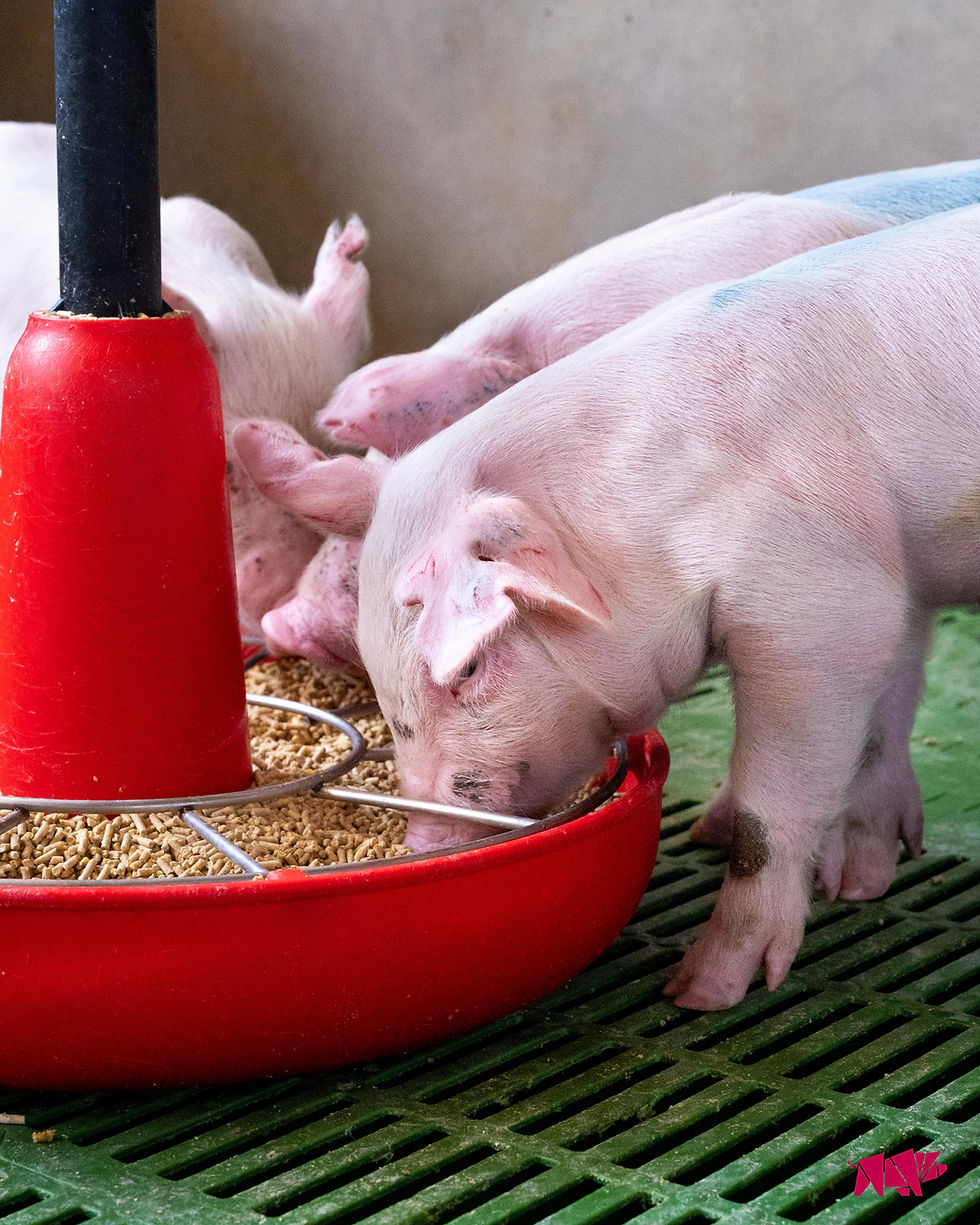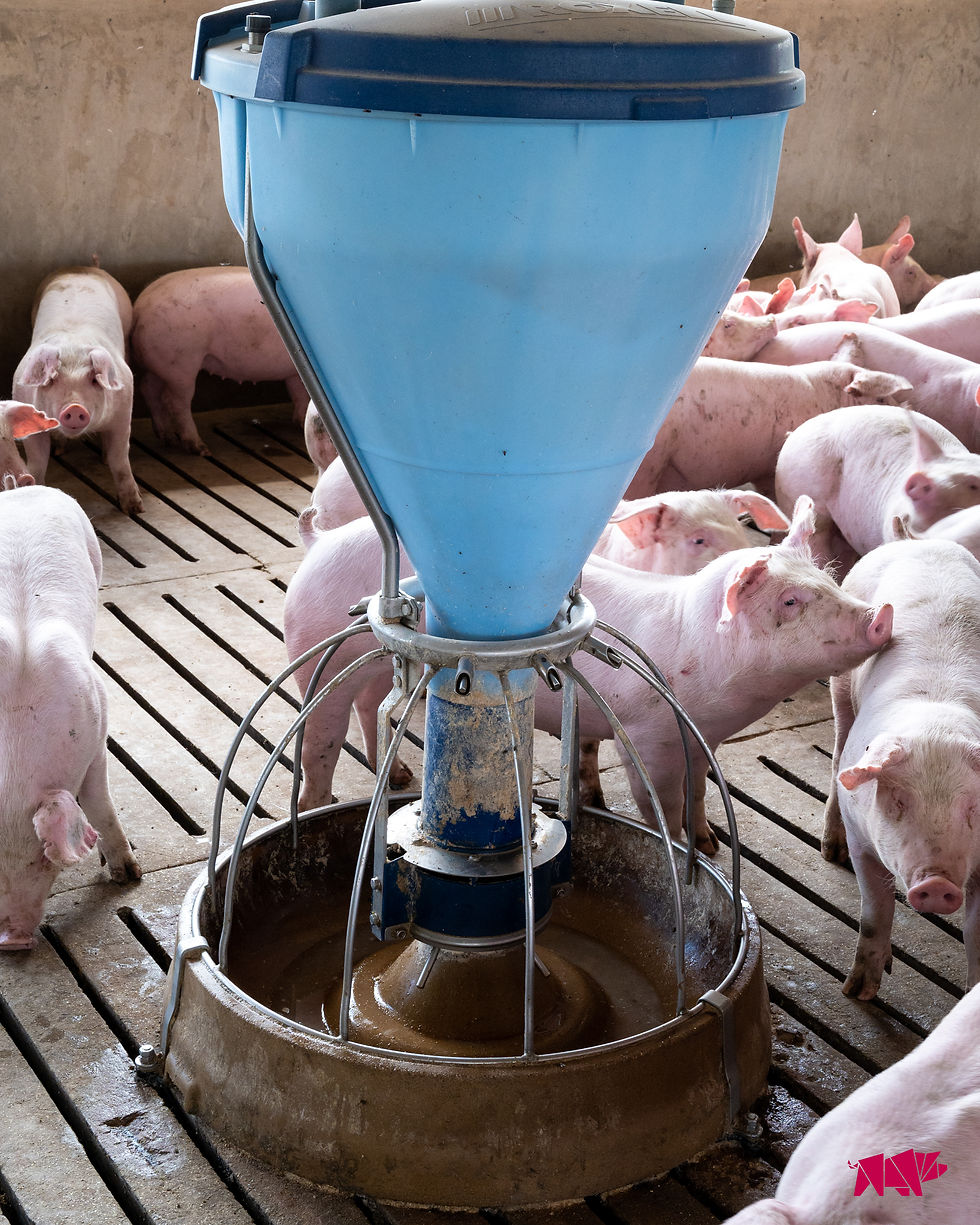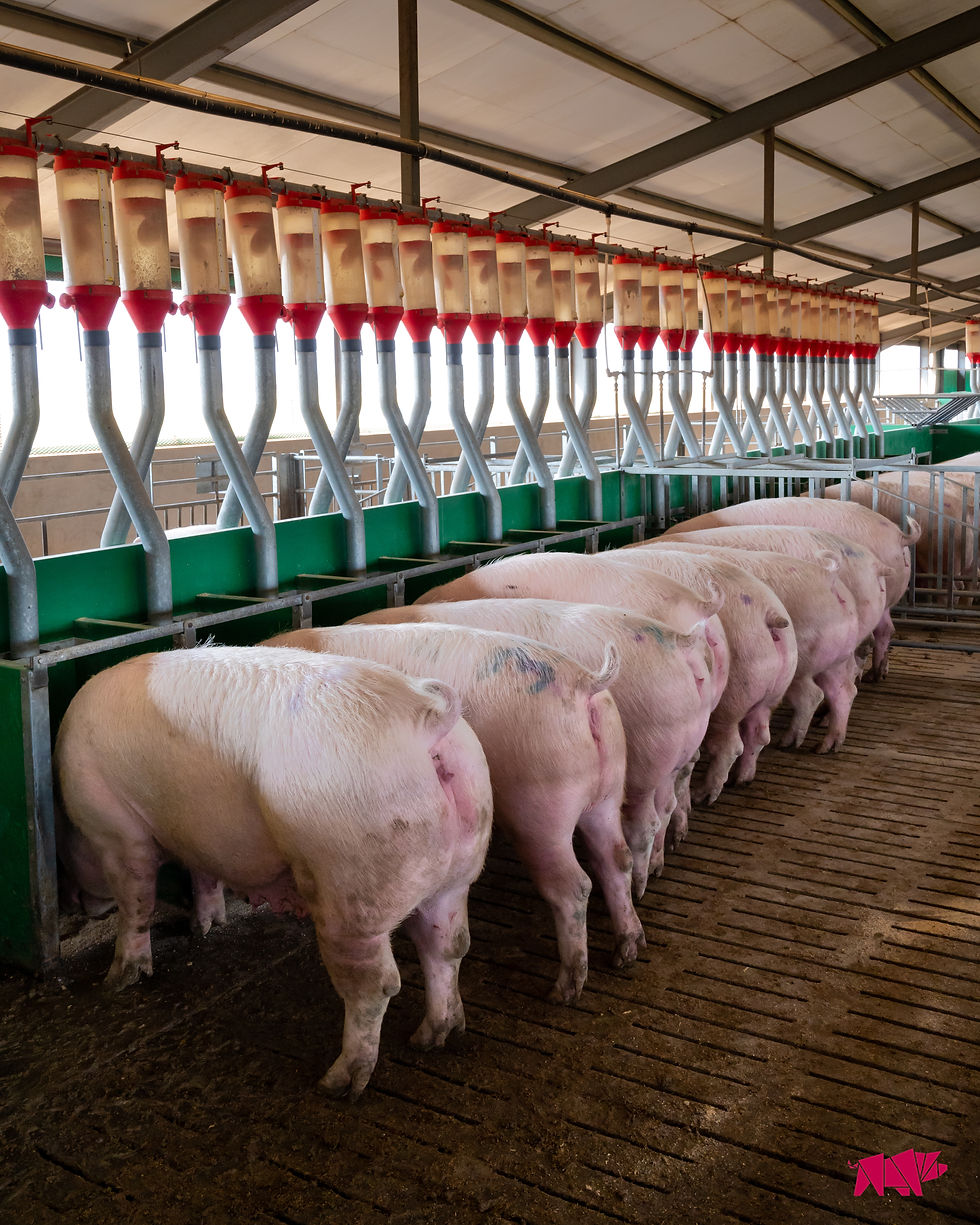PIGS AND NUTRITION: HOW TO GROW THE HEALTHIEST PIGS FOR BEST MEAT QUALITY
- taaibosch1
- Feb 27, 2023
- 2 min read
"You are what you eat" applies just as much to pigs as to humans. What a pig eats ultimately determines its meat quality.
Nutrition in a Piggery is a science and in-depth field of study on its own. We have a certified veterinary nutritionist continually formulating and adjusting our recipes. The nutritionist ensures the pigs get the correct quantity and balance of energy, protein, fibre, vitamins, and minerals at each stage of their life. Routine testing is done on raw materials and recipes are adjusted if needed to ensure optimal nutrient balance.
A pregnant sow, lactating sow, weaned piglet, finisher pig, and a maiden gilt selected for breeding will have vastly different nutritional needs. The method, volume, and frequency at which pigs are fed also change depending on their production phase.

Managing Fertility and Conception of Pigs
Nutrition also plays a role in the management of fertility and conception by ensuring a sow or gilt comes on heat in a specific period. The schedule, method of feeding, and feed formulation has a big impact on the success of her mating, early gestation and lactation.

Gilt Development and Nutrition
Gilt development starts as early as 10 weeks. In terms of nutrition, selected gilts are put on a specific feed to ensure lifetime development, growth, and health. Initially, gilts are fed ad-lib until about 21 weeks. The next selection is done and their feed ration is adjusted, restricted, and managed to ensure they remain within healthy growth curves. From 24 weeks, they are prepared for their heat cycles through boar exposure and flush feeding in 3-week cycles until they are mated at 30 weeks (210 - 220 days).
Sows and Nutrition Needs
When a sow’s piglets are weaned and she is moved to the mating house, she receives flush feeding to assist in initiating her heat cycle. Pregnant sows are carefully monitored and feed adjusted at each stage of their gestation to ensure the piglets (and sow) get optimal nutrition.
A week before her due date, feed is decreased to ensure the piglets don’t get too big and to prevent edema in the sow. Lactation feed is given as soon as piglets are born to encourage milk production and to sustain the sow’s health and body condition. Lactating sows are fed multiple times a day to encourage good feed intake.

Even if pigs will eat just about anything, don't feed them waste products or unbalanced meals. WHAT you feed a pig will greatly determine its growth, health, and meat quality.
For more information about local sales and exports, get in touch with sales@taaibosch.com.


Commentaires